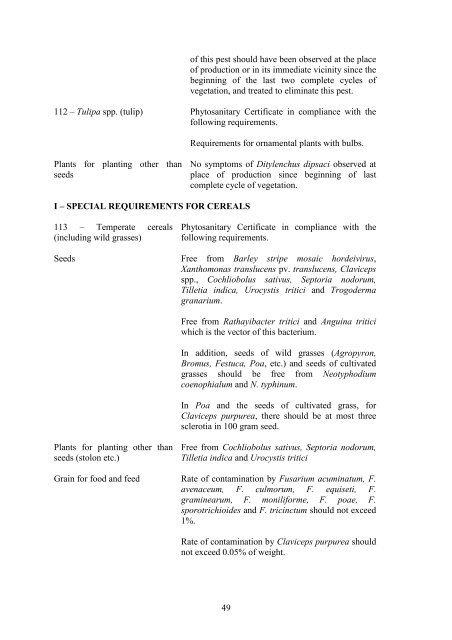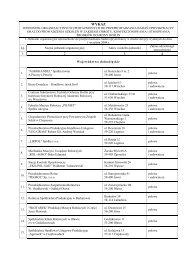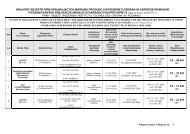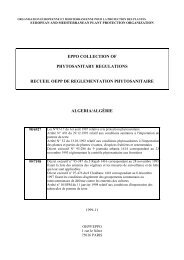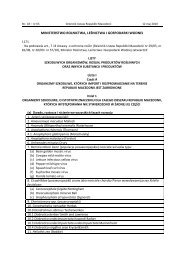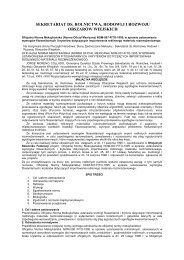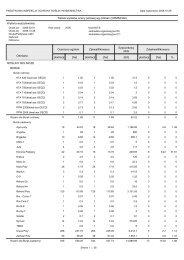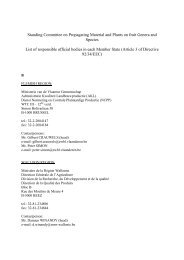eppo collection of phytosanitary regulations recueil oepp de
eppo collection of phytosanitary regulations recueil oepp de
eppo collection of phytosanitary regulations recueil oepp de
You also want an ePaper? Increase the reach of your titles
YUMPU automatically turns print PDFs into web optimized ePapers that Google loves.
<strong>of</strong> this pest should have been observed at the place<br />
<strong>of</strong> production or in its immediate vicinity since the<br />
beginning <strong>of</strong> the last two complete cycles <strong>of</strong><br />
vegetation, and treated to eliminate this pest.<br />
112 – Tulipa spp. (tulip) Phytosanitary Certificate in compliance with the<br />
following requirements.<br />
Plants for planting other than<br />
seeds<br />
I – SPECIAL REQUIREMENTS FOR CEREALS<br />
113 – Temperate cereals<br />
(including wild grasses)<br />
Requirements for ornamental plants with bulbs.<br />
No symptoms <strong>of</strong> Ditylenchus dipsaci observed at<br />
place <strong>of</strong> production since beginning <strong>of</strong> last<br />
complete cycle <strong>of</strong> vegetation.<br />
Phytosanitary Certificate in compliance with the<br />
following requirements.<br />
Seeds Free from Barley stripe mosaic hor<strong>de</strong>ivirus,<br />
Xanthomonas translucens pv. translucens, Claviceps<br />
spp., Cochliobolus sativus, Septoria nodorum,<br />
Tilletia indica, Urocystis tritici and Trogo<strong>de</strong>rma<br />
granarium.<br />
Plants for planting other than<br />
seeds (stolon etc.)<br />
Free from Rathayibacter tritici and Anguina tritici<br />
which is the vector <strong>of</strong> this bacterium.<br />
In addition, seeds <strong>of</strong> wild grasses (Agropyron,<br />
Bromus, Festuca, Poa, etc.) and seeds <strong>of</strong> cultivated<br />
grasses should be free from Neotyphodium<br />
coenophialum and N. typhinum.<br />
In Poa and the seeds <strong>of</strong> cultivated grass, for<br />
Claviceps purpurea, there should be at most three<br />
sclerotia in 100 gram seed.<br />
Free from Cochliobolus sativus, Septoria nodorum,<br />
Tilletia indica and Urocystis tritici<br />
Grain for food and feed Rate <strong>of</strong> contamination by Fusarium acuminatum, F.<br />
avenaceum, F. culmorum, F. equiseti, F.<br />
graminearum, F. moniliforme, F. poae, F.<br />
sporotrichioi<strong>de</strong>s and F. tricinctum should not exceed<br />
1%.<br />
Rate <strong>of</strong> contamination by Claviceps purpurea should<br />
not exceed 0.05% <strong>of</strong> weight.<br />
49


